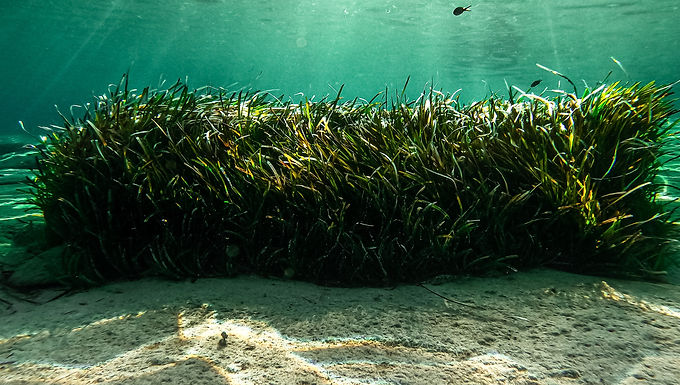
Mapping seaweed beds using multispectral imagery retrieved by UAVs
This is placeholder text. To change this content, double-click on the element and click Change Content.

Abstract: Seaweed assemblages are present in rocky shores around the world, creating very productive ecosystems with high ecological and economic importance. These assemblages include a variety of structuring species that provide habitat, food and shelter for organisms from different trophic levels such as invertebrates, fish, and top predators, supporting complex trophic webs. Seaweeds are also considered a natural resource, for human use. Although traditionally seaweeds were used as fertilizer and animal feed in western countries, they are now considered a healthy food and are increasingly being incorporated in diets due to their recognised nutritional and functional properties. Therefore, an increased demand for biomass is being triggered by the development of new markets, due to seaweed bioactive properties, such as feed /food supplements and nutraceuticals/cosmetics. In situ conventional surveys for biomass assessment are time and resources consuming, calling for the development of innovative, reliable yet expeditious, imagery tools to map the intertidal and assess seaweed biomass available in the field, using remotely sensed images. The present work is being developed in the framework of the project SWUAV- Mapping the intertidal zone and assessing seaweed biomass using UAV images. This project aims to map seaweed beds and assess their standing stock, combining RGB, multispectral and hyperspectral images retrieved by unmanned aerial vehicles (UAV), with spectroradiometer data collected in the field. The basis of this approach is the discrimination of seaweeds by their pigmentation and grouped in green (Chlorophyta), red (Rhodophyta) or brown (Phaeophyceae) typologies. Within each group, it will be relevant to differentiate the main genus and if possible distinguish between species. Hence, a standard spectral signature will be obtained for assessing and remotely map the biomass available in the field for those discriminated seaweeds in a second stage of the project. Spectral signatures of several seaweed species were collected with a hand held spectroradiometer (ASD HandHeld 2: 325- 1075 nm) on a black background in several layers to obtain pure signatures. A preliminary linear discriminant analysis (LDA) over collected spectral signatures, performed after a band reduction operation carried out by using a recursive feature elimination (RFE) method, enabled to conclude that seaweeds are highly differentiable in what regards to both pigmentation typology and reproductive status (Fig 1). The influence of seaweed biomass variation (for species of green, red and brown seaweed) on the reflectance spectra was investigated through an experimental addition and removal of blades to and from a 53 cm2 surface matching the spectroradiometer ground field of view (GFOV). The measurements ranged from one single blade to overfilling the GFOV with seaweeds blades, progressively adding several layers. Seaweed samples were subsequently dried at 60?C for 48 h and weighed (dry weight: DW). Biomasses were expressed by surface unit, in gDWm-2 and plotted against the Normalized Difference Vegetation Index (NDVI) of each sample to build the relationship between these two variables per species (Ulva spp.: Fig 2). In parallel, a flight using an UAV equipped with RGB (as basis for photo-interpretation) and multispectral cameras (MicaSense RedEdge camera) was performed in February 2019 at Vila Chã rocky shore. All images were orthorectified, mosaicked and precisely georeferenced using a high accuracy GPS receiver, so that information of different sensors and seasons can be overlaid in a Geographic Information System. Using the multispectral data, we calculated the NDVI for the area covered by the UAV. The flight was set at 20 m height, yielding pixel sizes of 0.8 cm for the RGB and 1.6 cm for the multispectral, and supervised classification techniques were applied in QGIS to evaluate the extension of the following four ecosystem components: seaweeds; sand; mussels and rock; rock, barnacles and limpets. Three quadrate frames of 50×50 cm were used for the definition of training areas for each of the four classes. The validation of the classification process was performed by assessing its accuracy comparing the software output with the groundtruthing observations of an extra quadrate per class. The information on the calculated NDVI for the seaweed beds in the studied area, is currently being crossed with data on species spectral discrimination and biomass/NDVI variation, so as to allow the remote assessment of the seaweed biomass. Similar flights will be performed in different seasons in order to assess seasonal variation of seaweed biomass and ecosystem components. Future work in the scope of SWUAV will also combine this information with hyperspectral data in order to develop a QGIS plugin for remotely assess and map seaweed biomass. This will be a valuable tool for rapid mapping and quantification of seaweed biomass, improving the knowledge of the local ecosystems, and contributing for efficient and sustainable management of marine habitats.
